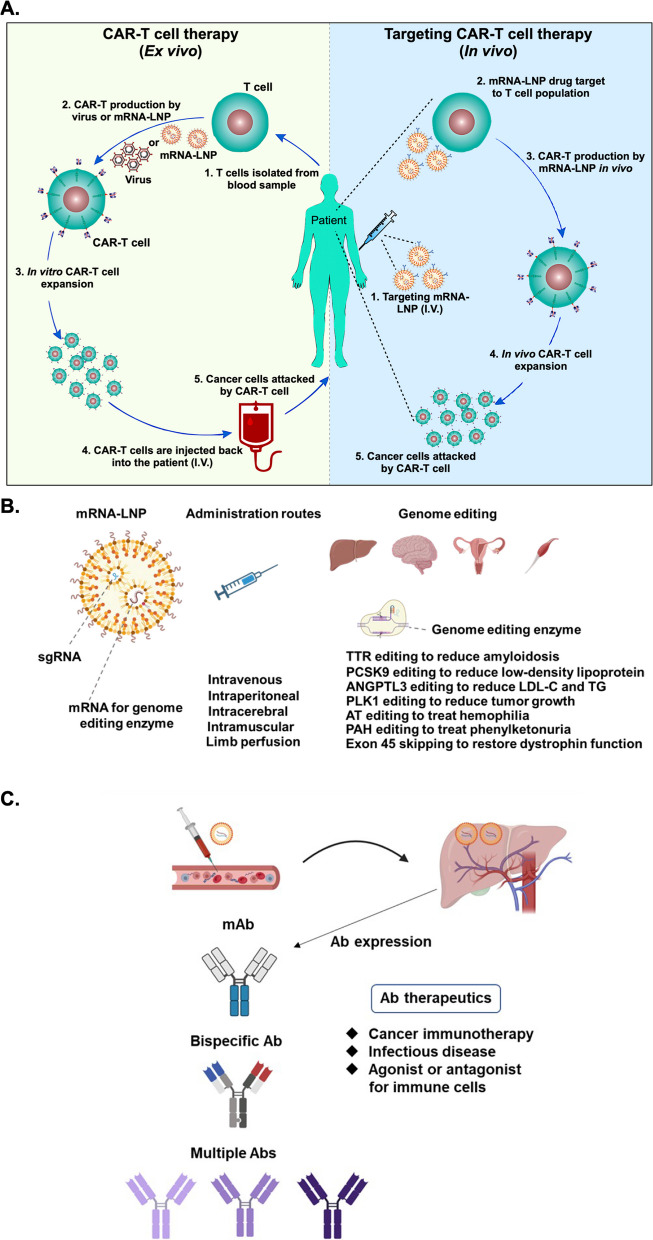Fig. 5.
mRNA-based new modalities for disease treatments. A Current CAR-T technology requires the isolation of T cells from a patient and processing of the isolated cells into CAR-T cells (right panel). Next-generation CAR-T therapy is expected to be more effective, shorten the therapeutic timeframe and lower the cost. CAR-T cells may be generated in patients through intravenous injection of targeted mRNA-LNPs (left). B LNP-encapsulated mRNAs encoding genome editing enzymes and other components may be administrated through different routes. Genes of transthyretin (TTR), proprotein convertase subtilisin/kexin type 9 (PCSK9), angiopoietin-like 3 (ANGPTL3), polo-like kinase 1 (PLK1), antithrombin (AT), phenylalanine hydroxylase (PAH) or exon 45 was edited and eventually alleviated the disease progression. sgRNA: single guide RNA; LDL-C: low-density lipoprotein cholesterol; TG: triglycerides (TG). C Utilization of mRNA drugs for engineering therapeutic antibodies (Abs). LNP-based delivery can be applied to generate different types of therapeutic Abs at higher levels and with more sustainable expression than conventional antigen injections. This approach could be applied to a variety of diseases, including cancers and infectious diseases

